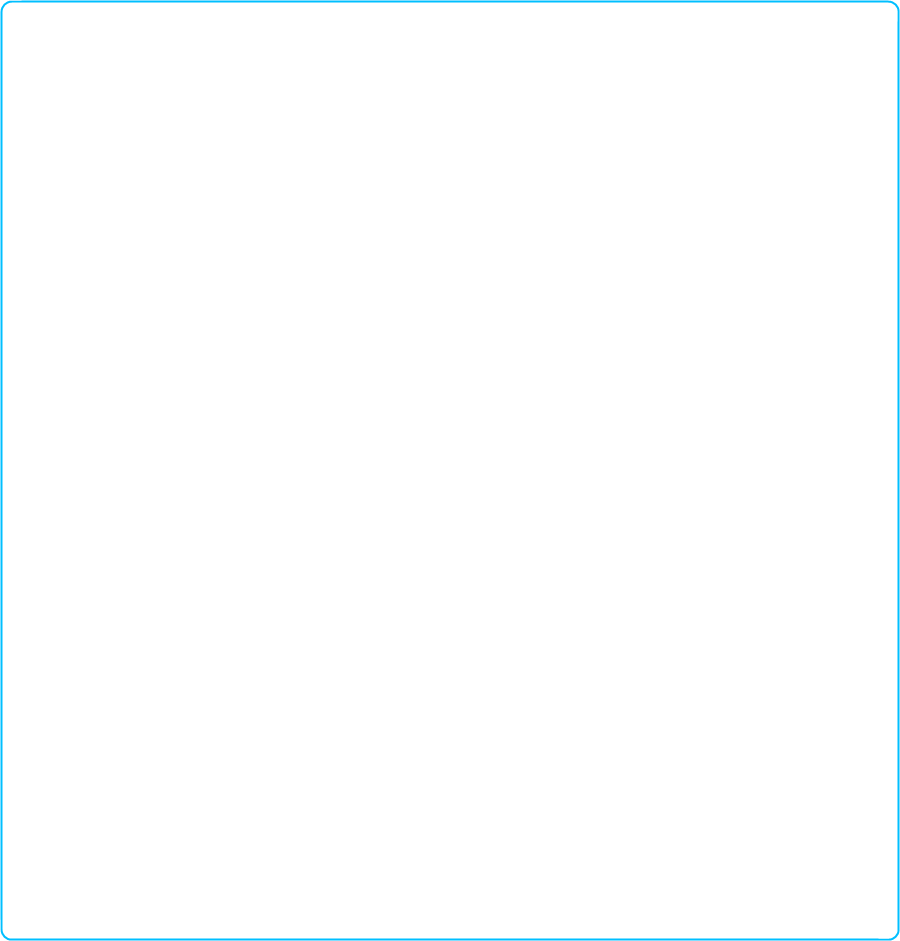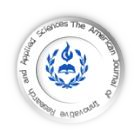

| HOME | ABOUT US | ARCHIVE | AIMS AND SCOP | AUTHORS | REVIEW | SUMIBMIT MANUSCRIPT | EDITORIAL BOARED | PUBLICATION FEE |
| ISSN: 2429-5396 (e) | https://www.american-jiras.com | |
| Web Site Form: v 0.1.05 | JF 22 Cours, Wellington le Clairval, Lillebonne | France |
| Web Site Form: v 0.1.05 | JF 22 Cours, Wellington le Clairval, Lillebonne | France |
TEMPLATE ARTICLE FOR ORIGINAL RESEARCH ARTICLE













1. INTRODUCTION (Heading, Color Sky Bleu, Tahoma 12 pt., and bold Face)
(Text, Tahoma 10, interline 1 simple). To site references on the text use color Sky Blue and respect this form:
- when two references follow each use coma as: [3,4].
- When references are different and not follow each so use dash to separate references for example: [3-9] or [3-9,10,11]. Zimmerman suggested that… [3,4,5-3-1].
- When you begin the sentence by authors use: Last Name of authors (year of publication). e.g., Zimerman (1998) suggested that…..and at the end of sentence add number of references [10].
- When there is tow authors use: Last Name of author 1 and Last Name of author 2 (Year of publication). e.g., Zimmerman and Michelin (1998) suggested that…..and at the end of sentence add number of references [11].
- When there is much more authors use: Last Name et al. (Year of publication). e.g.,. Zimerman et al. (1998) suggested that…..and at the end of sentence add number of references [13].
How to write you introduction: Introduction is the most delicate part of the writing of article. Thus it is important to keep it short. Removing everything that is not really necessary is often a very effective strategy for improving an introduction. To make success of your introduction you should respect these three parts: Background. In this part you have to make clear what the context is. Ideally, you should give an idea of the state-of-the art of the field the report is about. But keep it short. State the Problem. If there was no problem, there would be no reason for writing a report, and definitely no reason for reading it. So, please tell the reviewer why she should precede reading. A simple sentence like "So far no-one has investigated the link..." or "The above-mentioned solutions don't apply to the case ...", can sometimes be enough to clarify the point you want to get at. Experience shows that for this part a few lines are often sufficient.
The Proposed Solution. Now - and only now! - You may outline the contribution of the report. Here you have to make sure you point out what are the novel aspects of your work. There are probably zillions of articles out there on that very subject: you can't expect the reviewer to know them all; so make his life easier and clearly highlight what is the difference between your method and the others. You can take your time here, but I suggest avoiding getting into too much detail.
2. MATERIALS AND METHODS (Heading, Color Sky Bleu, Tahoma 12 pt., Bold Face)
Text Tahoma 10 pt. The authors should report their research methods in full detail. If your methods are unusual, please report both successes and difficulties so that other researchers can learn from your experience.
2.1. Statistical Methods: (Sub-heading, Color Sky Bleu, Tahoma 10 pt., Bold Face)
Text Tahoma 10 pt., Describe the technical statistics used in data analysis in detail, test used type of sofwear used to make analyzise.
Text Tahoma 10 pt. The authors should report their research methods in full detail. If your methods are unusual, please report both successes and difficulties so that other researchers can learn from your experience.
2.1. Statistical Methods: (Sub-heading, Color Sky Bleu, Tahoma 10 pt., Bold Face)
Text Tahoma 10 pt., Describe the technical statistics used in data analysis in detail, test used type of sofwear used to make analyzise.
3. RESULTS (Heading Color Sky Bleu, Tahoma 12 pt., Bold Face)
You can give the results of your work under the title of "RESULTS". Insert the Figure and Table into their place on article. Results should be presented in a logical sequence in the text, tables and figures. Repetitive presentation of the same data in tables and figures should be avoided.
In some cases, the Results and Discussion sections can be combined.
3.1. Table, Figure, Photographs: All Table, figures, drawings, graphs and photos should be placed in numerical order in the text and have enough resolution (min. 300 dpi) to be easily followed by the reader. Color photos and drawings are also acceptable.
3.3. Units of Measure: All scientific measurements should be expressed in SI units.
3.4. Equations: All equations are centered on a line with preceding and succeeding blank lines to separate them from the text and numbered. The equation numbers appear at the right-hand-side of each equation (near right margin) written in parentheses "( )", e.g.
D= R Ln(-G/nrt) (1)
3.5. Nomenclature and Units: use international nomenclature. SI units (meter, kilogram, etc.), as outlined in the latest edition of Units, symbols and Abbreviations: A Guide for Medical and Scientific Editors and Authors (Royal Society of Medicine Press, London), should be used wherever possible.
3.6. Abbreviations: For the purpose of simplicity, write the full term for each abbreviation at its first use in abstract, and text. Define the abbreviation inside of parentheses.
You can give the results of your work under the title of "RESULTS". Insert the Figure and Table into their place on article. Results should be presented in a logical sequence in the text, tables and figures. Repetitive presentation of the same data in tables and figures should be avoided.
In some cases, the Results and Discussion sections can be combined.
3.1. Table, Figure, Photographs: All Table, figures, drawings, graphs and photos should be placed in numerical order in the text and have enough resolution (min. 300 dpi) to be easily followed by the reader. Color photos and drawings are also acceptable.
3.3. Units of Measure: All scientific measurements should be expressed in SI units.
3.4. Equations: All equations are centered on a line with preceding and succeeding blank lines to separate them from the text and numbered. The equation numbers appear at the right-hand-side of each equation (near right margin) written in parentheses "( )", e.g.
D= R Ln(-G/nrt) (1)
3.5. Nomenclature and Units: use international nomenclature. SI units (meter, kilogram, etc.), as outlined in the latest edition of Units, symbols and Abbreviations: A Guide for Medical and Scientific Editors and Authors (Royal Society of Medicine Press, London), should be used wherever possible.
3.6. Abbreviations: For the purpose of simplicity, write the full term for each abbreviation at its first use in abstract, and text. Define the abbreviation inside of parentheses.
4. DISCUSSION (Color Sky Bleu, Tahoma 12 pt., Bold Face)
The results should be discussed in relation to any hypotheses advanced in the Introduction. Comment on results and indicate possible sources of error. Place the study in the context of other work reported in the literature. If possible discuss also the limitation of the study.
In some cases, the Results and Discussion sections can be combined.
Acknowledgment (Color Sky Bleu, Tahoma 12 pt., Bold Face, without number)
This should be after conclusion and not be more than 80 words. Type the word "Acknowledgment" as a sub-heading (Without any number; Color Sky blue, Tahoma10 pt., bold-face)) followed by the text. Please acknowledge your research funding body and/or other organizations that have contributed to the research. not parent or colleagues in your institution. Any grant or corporate sponsorship should be noted here.
6. REFRENCES
* Type the word "REFERENCES" as the major heading. References should be numbered in the order in which they appear in
the text and in accordance with the examples given at the end of this instruction (Tahoma 8 pt.).
- The reference numbers in the text should be given in brackets colored in Sky Bleu as "[ ]". for expl. [1]
* To site references on the text respect this form:
- when two references follow each use comma as: [3,4].
- When references are different and not follow each so use dash to separate references that not succeed, for example: [3-9]
or [3-9,10,11].
- When you begin the sentences by a single authors name so use: Name (year of publication) and give your sentences or
paragraph at the end of sentence give references in bracket as [19] . for exp: Albert (2015) ................... that the level of IGf
1 incresead by 90% [19].
- When there are some authors, so use this form: Name of first author et al. (Year of publication) and add your sentences or
paragraph at the end add the numerical order of this references for exp: Alain et al. (2015) ...................... the level of IGf1
increased by 80% [7].
- Wen you begin you sentence by the references that content only two authors so give the name of these tow authos and
add year of publication for exp.: Alain and Monarc (2014)..................................the rol of IGf 1 is importnat to reduced breast
cancer [13].
- At the end of the article list all references in numerical order as they appears in the text (Use Vancouver style).
* The references must be in the following form:
Text reference, Tahoma 8 PT, simple interline, Add URL link to all references cite at the end, respect the form if
not respected your article will be rejected.
1. First Name, middle (only initial in capital) and last Name (only initial in capital). Full Name of the Journal
( in italic). Year of publication, Volume number (Issues number): Page number separate by dash (-).
Available: add URL Linke to references journal. See below:
Were available, URLs for the references must be provided.
When there are six or fewer authors, cite all of them. If there are seven or more, then cite the first three followed by et al.
1. Huynen MMTE, Martens P, and Hilderlink HBM. The health impacts of globalization: a conceptual framework. Global Health.
2005;1(4): 14-18. Available on: http://www.globalizationandhealth.com/content/1/1/14. (Journal reference)
2. Bates B. Bargaining for life: A social history of tuberculosis. 1st ed. Philadelphia: University of Pennsylvania Press; 1992.(For
Book)
3. Milhour FD, Ronong TF. Health and Nutrition. In: Leverve X, Cosnes J, Erny P, Hasselmann M, editors. Adult artificial
nutrition. Paris: M. Guéna; 1998. p. 415-32 (Chap. 35). (For Book Chapter in an Edited Book)
4. Fountain H. For Already Vulnerable Penguins, Study Finds Climate Change Is Another Danger. The New York Times. 29 Jan
2014. Available on: http://www.nytimes.com/2014/01/30/science/earth/climate-change-taking-toll-on-penguins-study-
finds.html. Accessed 17 March 2014. (For Published media (print or online newspapers and magazine articles)
5. Wells A. Exploring the development of the independent, electronic, scholarly journal. M.Sc. Thesis, The University of
Sheffield. 1999. Available on: http://cumincad.scix.net/cgi-bin/works/Show?2e09. (For Masters' theses or doctoral dissertations)
6. Multimedia (videos, movies, or TV shows). (For Multimedia :videos, movies, or TV shows)
7. Magott J, and Skudlarski K, 1989. Combining Generalized Stochastic Petri Nets and PERT Networks For The Performance
Evaluation Of Concurrent Processes. Proceedings of the 3rd International Workshop on Petri Nets and Performance Models,
Dec. 11-13, IEEE Xplore Press, Japan, pp: 249-256.DOI:10.1109/PNPM.1989.68558 or ISBN-10:9022004635. (Conference
proceedings)
7. AUTHORSHIP CRITERIA
Authorship credit should be based only on substantial contributions to each of the two components mentioned below:
- Concept and design of study or acquisition of data or analysis and interpretation of data;
- Drafting the article or revising it critically for important intellectual content;
The identity of authors not revealed in paper except title page. Participation solely in the acquisition of funding or the collection of data does not justify authorship. General supervision of the research group is not sufficient for authorship. Each contributor should have participated sufficiently in the work to take public responsibility for appropriate portions of the content of the manuscript. The order of naming the contributors should be based on the relative contribution of the contributor towards the study and writing the manuscript. Once submitted the order cannot be changed without written consent of all the contributors.
8. CONFLICTS OF INTEREST
The author must disclose any and all conflicts of interest they may have with publication of the manuscript or an institution or products used in the manuscripts.
9. PRIVACY STATEMENT
The names and email addresses entered in this journal site will be used exclusively for the stated purposes of this journal and will not be made available for any other purpose or to any other party.
10. GALLERY PROOFS
Once the final review is completed, the author will be required to resubmit the revised manuscript. The final Galley Proof will be sent via e-mail as an Acrobat PDF file and should be returned within 3 days of receipt.
Alterations to the text and figures (other than the essential correction of errors) are unacceptable at proof stage and authors may be charged for excessive alterations.
Authorship credit should be based only on substantial contributions to each of the two components mentioned below:
- Concept and design of study or acquisition of data or analysis and interpretation of data;
- Drafting the article or revising it critically for important intellectual content;
The identity of authors not revealed in paper except title page. Participation solely in the acquisition of funding or the collection of data does not justify authorship. General supervision of the research group is not sufficient for authorship. Each contributor should have participated sufficiently in the work to take public responsibility for appropriate portions of the content of the manuscript. The order of naming the contributors should be based on the relative contribution of the contributor towards the study and writing the manuscript. Once submitted the order cannot be changed without written consent of all the contributors.
8. CONFLICTS OF INTEREST
The author must disclose any and all conflicts of interest they may have with publication of the manuscript or an institution or products used in the manuscripts.
9. PRIVACY STATEMENT
The names and email addresses entered in this journal site will be used exclusively for the stated purposes of this journal and will not be made available for any other purpose or to any other party.
10. GALLERY PROOFS
Once the final review is completed, the author will be required to resubmit the revised manuscript. The final Galley Proof will be sent via e-mail as an Acrobat PDF file and should be returned within 3 days of receipt.
Alterations to the text and figures (other than the essential correction of errors) are unacceptable at proof stage and authors may be charged for excessive alterations.
5. CONCLUSION (Color Sky Bleu, Tahoma 12 pt, Bold Face)
The main conclusions of you study should be presented. Authors will describe the contribution of the work to the scientific community or/and the practical applications of their research or its economic implications. Also, all authors are encouraged to ask: is there anything the community should be doing differently as a result of your research? Have you identified areas for future research? If so, please state them here.
ABSTRACT (Heading, Color Sky Bleu, Tahoma 10 pt., and Bold Face)
(Abstract text Tahoma 9 pt.)Type the word "ABSTRACT" as the major heading (without any section number). The abstract must not exceed 350 words and must be structured as follows: Background, Objectives, Methods, Results, and Conclusions . The text is given following the affiliation and leaving three blank lines. If the manuscripts write in French the English translation of abstract will be made.
Keywords: Type the word "Keywords" in italic characters. Keywords related with the study must be given in minimum number (maximum six words) and separated by commas (Tahoma 8 pt.). Also the keys word cited must be different from that in the Title of paper.
(Abstract text Tahoma 9 pt.)Type the word "ABSTRACT" as the major heading (without any section number). The abstract must not exceed 350 words and must be structured as follows: Background, Objectives, Methods, Results, and Conclusions . The text is given following the affiliation and leaving three blank lines. If the manuscripts write in French the English translation of abstract will be made.
Keywords: Type the word "Keywords" in italic characters. Keywords related with the study must be given in minimum number (maximum six words) and separated by commas (Tahoma 8 pt.). Also the keys word cited must be different from that in the Title of paper.
Manuscript preparation includes information on fonts, spacing, word, figure and table, manuscript Title Page, Major Headings, Sub-heading, Secondary Sub-heading, Abstract, Introduction, Materials and Methods, Statistical Methods, Results, Figure Illustrations, Photographs, Table, Units of Measure, Equations, Nomenclature, Abbreviations, Discussion, Conclusion, Acknowledgments, References, Authorship Criteria and Conflicts of Interest.
PLEASE READ CAREFULLY
We accept a manuscript on the understanding that it is reporting unpublished work and that it is not under consideration for publication elsewhere. During evaluation the AJIRAS teams use a plagiarism analysis.
WORD
The manuscripts should be written with MSTM Word or with, RTF, WordPerfect document file format, Open Office, with character size of 10 Tahoma. Articles prepared on Mac systems should be saved in Word for Windows compatible format. Articles prepared in LaTeX may be submitted in PDF format for use during the review process. After acceptance, however, .text files will be required. Please DON’T insert page numbers and DON’T write anything in the Headers and Footers part of the pages.
INFORMATION ON FONTS
Manuscripts should be written in English or French and typed on single-sided A4 paper. Research articles should include the following, each beginning on a fresh page: title, abstract, introduction, methods, results, tables and figures, acknowledgements, discussion, references.
SPACING
The text must be single spaced with margins left and right of at least 1cm.
TITEL OF MANUSCRIPT
Title of the Paper: It is written in capital letters (Tahoma 12 pt., bold-face) centered on one or more lines. For articles in French, the English translation of the title should be made.
The first page of manuscript should contain an informative title, the first name, and last name of each author. The page should also include the name of University/institution (s), department, city and country to which the work should be attributed, and the name, address, and email of the author responsible for correspondence about the manuscript .
Names of the Authors: Leaving two blank lines after the Title of the paper, the names of the authors are written (Tahoma 12 pt., bold-face) centered on a line, separated by commas.
Affiliations: are written (Tahoma 8 pt., bold-face) It is written following a blank line after the Names of the Authors and centered on a line. For authors having different affiliations, superscripted Arabic number (i.e. Michael Maroua1, 2, 3) are given to the names of the authors and different affiliations are written separately.
MAJOR HEADING
Major headings such as ABSTRACT, INTRODUCTION, MATERIEL AND METHODS, DISCUSSION, and REFERENCES should be written in capitals (Color Sky Bleu, Tahoma 12 pt., and bold-face) and numbered.
Sub-heading: A sub-heading within a section should be typed with first letter of words in capitals (Color Sky blue, Tahoma10 pt., bold-face) and numbered and followed by ".". Then, the text continues (Tahoma 10 pt., Bold Face).
Secondary Sub-heading: Beginning letters of sub-heading should be typed with capital letters (Color Sky blue, Tahoma10 pt., and bold-face) and followed by ".". Then, the text continues (Tahoma10 pt., Bold Face).
American Journal of Innovative Research & Applied Sciences follows all ethical standards to ensure scholarly integrity in a responsible manner, to maintain public trust in the research published for public benefit and research development.
AJIRAS Journal applied to be a member of the Committee on Publication Ethics (COPE) guidelines on research and publications ethics. The Journal considers all manuscripts on the strict condition that:
1. The manuscript is your own original work, and does not duplicate any previously published work. Plagiarism is not acceptable in AJIRAS submissions and publication; in all its forms (see icone AIMS AND SCOP) the plagiarism constitutes unethical publishing behaviour;
2. The manuscript has been submitted only to the journal - it is not under consideration or peer review or accepted for publication or in press or published elsewhere;
3. All listed authors know of and agree to the manuscript being submitted to the journal; and (See 4);
4. The manuscript contains nothing abusive, defamatory, fraudulent, illegal, libellous, or obscene;
5. The author should promptly inform the journal editor of any obvious error(s) in his or her published paper and cooperate earnestly with the editor in retraction or correction of the paper. If the editor is notified by any party other than the author that the published paper contains an obvious error, the author should write a retraction or make the correction based on the medium of publication;
6. The author should indicate all sources that have supported the research and also declare any conflict(s) of interest.
7. The author should give due acknowledgement to all of those who have made contributions to the research.
Plagirism note:
Text taken directly or closely paraphrased from earlier published work that has not been acknowledged or referenced will be considered plagiarism. Submitted manuscripts in which such text is identified will be withdrawn from the editorial process. Any concerns raised about possible plagiarism or other violations of ethical guidelines in an article submitted to or published in AJIRAS will be investigated fully and dealt with in accordance with the COPE guidelines. (See more detail )
AJIRAS Journal applied to be a member of the Committee on Publication Ethics (COPE) guidelines on research and publications ethics. The Journal considers all manuscripts on the strict condition that:
1. The manuscript is your own original work, and does not duplicate any previously published work. Plagiarism is not acceptable in AJIRAS submissions and publication; in all its forms (see icone AIMS AND SCOP) the plagiarism constitutes unethical publishing behaviour;
2. The manuscript has been submitted only to the journal - it is not under consideration or peer review or accepted for publication or in press or published elsewhere;
3. All listed authors know of and agree to the manuscript being submitted to the journal; and (See 4);
4. The manuscript contains nothing abusive, defamatory, fraudulent, illegal, libellous, or obscene;
5. The author should promptly inform the journal editor of any obvious error(s) in his or her published paper and cooperate earnestly with the editor in retraction or correction of the paper. If the editor is notified by any party other than the author that the published paper contains an obvious error, the author should write a retraction or make the correction based on the medium of publication;
6. The author should indicate all sources that have supported the research and also declare any conflict(s) of interest.
7. The author should give due acknowledgement to all of those who have made contributions to the research.
Plagirism note:
Text taken directly or closely paraphrased from earlier published work that has not been acknowledged or referenced will be considered plagiarism. Submitted manuscripts in which such text is identified will be withdrawn from the editorial process. Any concerns raised about possible plagiarism or other violations of ethical guidelines in an article submitted to or published in AJIRAS will be investigated fully and dealt with in accordance with the COPE guidelines. (See more detail )
As part of the submission process, authors are required to check off their submission's compliance with all of the following items, and submissions may be returned to authors that do not adhere to these guidelines.
1. The manuscript has not been previously published, nor is it before another journal for consideration (or an explanation has been provided in Comments to the Editor).
2. The manuscripts file should be written with MSTM Word-2007 or higher versions or with, RTF, WordPerfect document file format or Open Office. Articles prepared in LaTeX may be submitted in PDF format for use during the review process. After acceptance, however, .tex files will be required.
3. Where available, URLs for the references must be provided.
4. The text is single-spaced; uses a 10-point font; employs italics, rather than underlining; and all illustrations, figures, and tables are placed within the text at the appropriate points, rather than at the end.
5. The text adheres to the stylistic and bibliographic requirements outlined in the Guidelines Instruction for Authors and Template Article.
1. The manuscript has not been previously published, nor is it before another journal for consideration (or an explanation has been provided in Comments to the Editor).
2. The manuscripts file should be written with MSTM Word-2007 or higher versions or with, RTF, WordPerfect document file format or Open Office. Articles prepared in LaTeX may be submitted in PDF format for use during the review process. After acceptance, however, .tex files will be required.
3. Where available, URLs for the references must be provided.
4. The text is single-spaced; uses a 10-point font; employs italics, rather than underlining; and all illustrations, figures, and tables are placed within the text at the appropriate points, rather than at the end.
5. The text adheres to the stylistic and bibliographic requirements outlined in the Guidelines Instruction for Authors and Template Article.
Authors are asked to facilitate the review process by providing the names and e-mail addresses of at least three suitable reviewers, on the understanding that the editor is not bound by any such nomination. Failure to follow this request may delay the handling of your paper, since the editorial office may specifically ask you to nominate potential reviewers for papers covering unfamiliar areas.
Note: According to the recent study, either suggesting or excluding reviewers can significantly increase a manuscript's chances of being accepted.
Note: According to the recent study, either suggesting or excluding reviewers can significantly increase a manuscript's chances of being accepted.

|

American Journal of innovative
Research & Applied Sciences
Research & Applied Sciences
|

| HOME || ABOUT US || ARCHIVES || AIMS AND SCOP || AUTHORS || REVIEW|| SUBMIT MANUSCRIPT || EDITORIAL BOARD |
ISSN 2429-5396 (Online)
OCLC Number: 920041286
OCLC Number: 920041286

Download Template Article Written in French and using Word 97-2003:
Download Template Article Written in French and using Word 2010
Download Template Article Written in French and using Word 2010
Download Template Article written in English and using Word 2010
Download Template Article Written in English and using Word 97-2003
Download Template Article Written in English and using Word 97-2003
If have never written an article and you want to publish your research paper in AJIRAS JOURNAL read these documents it gives you informations about how to format your research article: English-Research-Article-Writing-Guide
Not that the other types of articles such case reports or images and reviews article, may have unstructured formats.
Not that the other types of articles such case reports or images and reviews article, may have unstructured formats.
Authors are requested to submit their papers electronically by using the Guidelines Instruction for Authors on web site. Authors are requested to submit the manuscript (That contain: Title, Nam of authors with affiliation, abstractwith keys words, Introduction, Materials and Methods, Results, Tables, Figure, Discussion, Conclusion, Acknowledgment and References) in electronic form to the address e-mail:
| americanajiras@gmail.com | and | ajiras@american-jiras.com |
Authors who are unable to provide an electronic version or have other circumstances that prevent online submission must contact the Editor prior to submission to discuss alternative options; email: | americanajiras@gmail.com | or sending us a letter to the office adress at: | JF 22 cours Wellington, Le Clairval, 76170 Lillebonne | France |.
To make sure that you can receive messages from us, please add the 'american-jiras.com' domain to your e-mail 'safe list'. If you do not receive e-mail in your 'inbox', check your 'bulk mail' or 'junk mail' folders.
| americanajiras@gmail.com | and | ajiras@american-jiras.com |
Authors who are unable to provide an electronic version or have other circumstances that prevent online submission must contact the Editor prior to submission to discuss alternative options; email: | americanajiras@gmail.com | or sending us a letter to the office adress at: | JF 22 cours Wellington, Le Clairval, 76170 Lillebonne | France |.
To make sure that you can receive messages from us, please add the 'american-jiras.com' domain to your e-mail 'safe list'. If you do not receive e-mail in your 'inbox', check your 'bulk mail' or 'junk mail' folders.

Please refer to our downloadable Template Article and Guidelines Instruction for Authors to make sure that your submission meets our formatting requirements. You may click on Download for detailed submission instructions, templates and other information:
CONTACT DETAILS FOR SUBMISSION
SUGGESTING THE REVIEWERS
INSTRUCTIONS FOR AUTHORS
SUBMISSION PREPARATION
PUBLICATION ETHICS
GUIDELINES INSTRUCTIONS FOR AUTHORS

| ISSN: 2429-5396 (e) | https://www.american-jiras.com | |
| Web Site Form: v 0.1.05 | JF 22 Cours, Wellington le Clairval, Lillebonne | France |
| Web Site Form: v 0.1.05 | JF 22 Cours, Wellington le Clairval, Lillebonne | France |